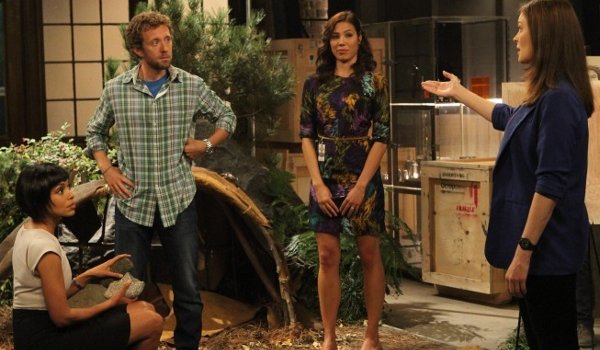- Title: Bones – The Archaeologist in the Cocoon
- tv.com: link


As Bones (Emily Deschanel) frets over her daughter’s inability to understand the finer points of peek-a-boo, Booth (David Boreanaz) and the Jeffersonian team are called into investigate the murder of a well-known (but not respected) archaeologist whose body is found in a giant cocoon.
Hodgins (T.J. Thyne) digs in his bag of tricks to free the body of the cocoon, and the numerous worms which spun it and are still trapped inside, as Booth and Sweets talk with the victim’s wife (Anya Monzikova) and brother-in-law (Zoran Korach) which lead Booth and Bones to a climate-controlled storage facility and a stockpile of ancient remains from Chechnya. After talking to the man’s publisher (Amy Yasbeck), Booth also learns the victim’s trips were funded in part by the proceeds of his rather Indiana Jones style juvenile adventure books and a single Creationist investor (Gary Grubbs) who bought several pieces from each on the archaeologist’s digs (and promptly hid or destroyed anything that didn’t mesh with his world view).
Much to Bones’ displeasure the Neanderthal and Homo sapien remains fall under Edison’s (Eugene Byrd) purview as the Jeffersonian’s resident anthropologist in charge of ancient remains. Edison promptly scoops up the valuable and mysterious find leaving Bones with a far less culturally significant murder to solve. This leads to tug of war between Edison and Dr. Brennan over the bones which puts Hodgins and Angela (Michaela Conlin) in the middle of the crossfire. Only after the pair stop competing do they discover the true value of the find.
With the exception of the subplot involving the Neanderthal and Homo sapien remains, “The Archaeologist in the Cocoon” provides a pretty good mystery with some strong, and natural, character conflict. Sadly the level of the historical find is more than a little hard to swallow, and the episode’s end is dragged down by yet another awkward sequence this season as members of Bones’ team build a set and act out events of thousands of years ago for a small studio audience.
